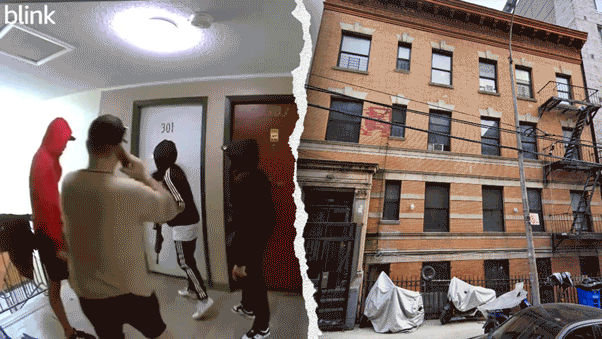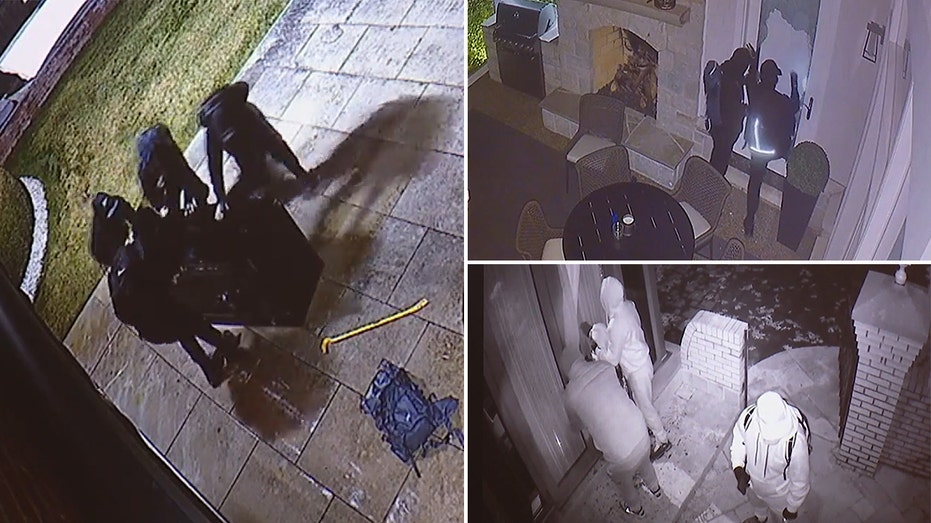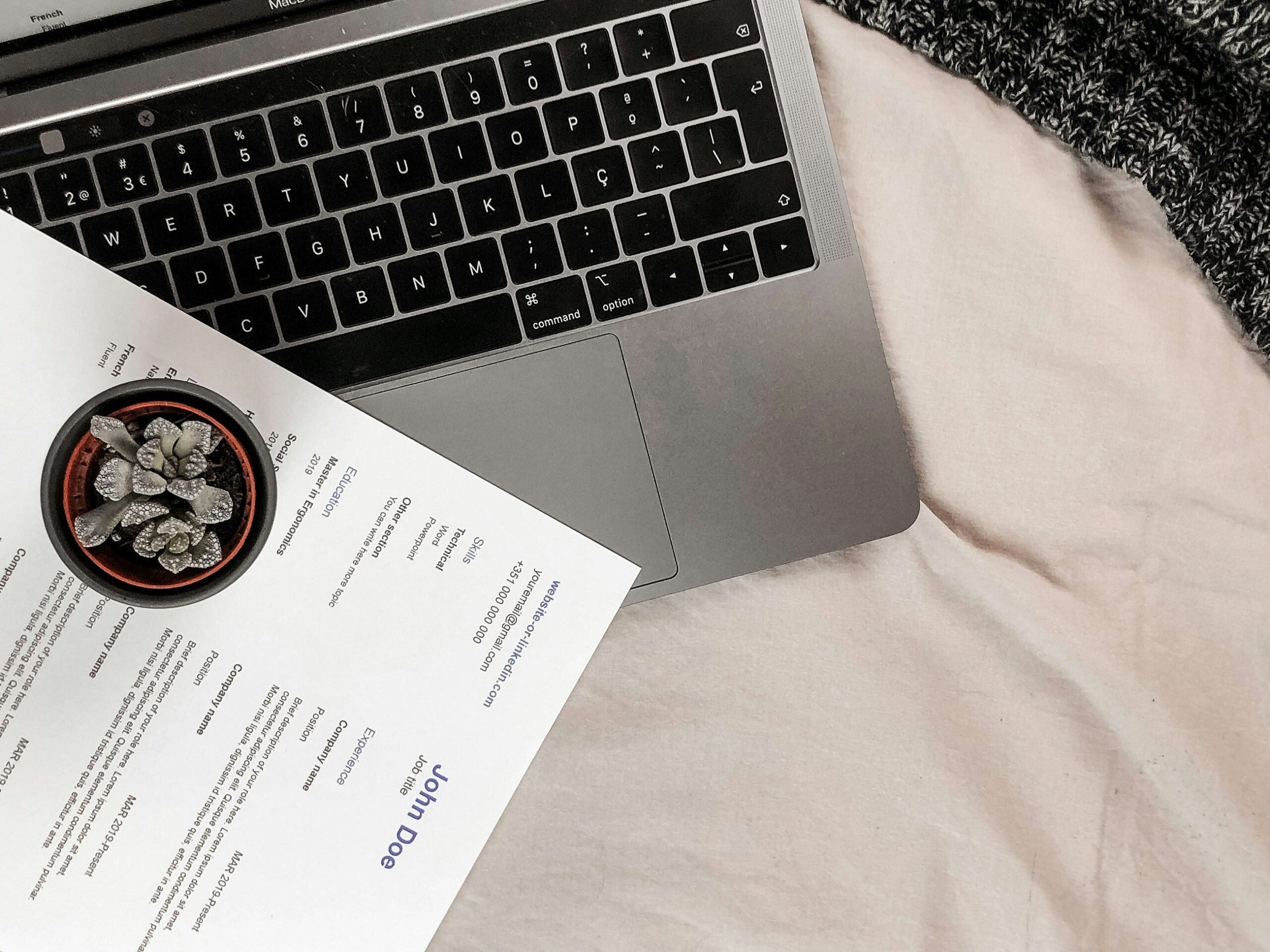10 Best Back Exercises for Beginners to Build Foundational Size and Strength
Unsure how to add size and strength to your traps, rhomboids, and lats? Use these beginner-friendly back exercises to help you build a bigger upper body.

When you look at the biggest guys in Hollywood like Arnold Schwarzenegger, John Cena, and Dwayne Johnson, you probably imagine they were born with giant arms, massive legs, a ripped six-pack, and colossal backs. While genetics plays a role, the truth is—everybody starts somewhere. So let's start with a beginner back workout.
As a novice, it might be tempting to stick to arm workouts to build out your upper body. (Who doesn't want huge biceps?) But if you want your waist to appear smaller (hello, V-taper), your posture to improve, and your T-shirts to fit just a little snugger (in a good way), a consistent beginner back workout that hits everything from your lats and upper and lower traps to your lower back is a must.
So, whether you want to build a massive back like The Rock did for Jumanji, ditch your love handles, or just hone a more powerful, well-defined upper body, these beginner back exercises, curated by Mike Krajewski, C.S.C.S., owner of MK Fitness in Nashville, TN, will forge fundamental strength, basic lifting skills, and fast muscle development.
The Best Beginner Back Workout of All Time
Directions
Use the following 10 back exercises for beginners to craft a complete back workout. Choose 2 to 3 exercises to add to your upper body day or pull day if you use a push-pull-legs routine. Pick a different set of exercises for each upper body or pull day in your weekly schedule.
Once you've got at least 6 months of lifting under your belt, you can add another 1 to 2 exercises to your routine. Start with 3 to 4 sets of each exercise, taking each set within at least 5 reps before failure.
1. Supported Pullups or Chinups
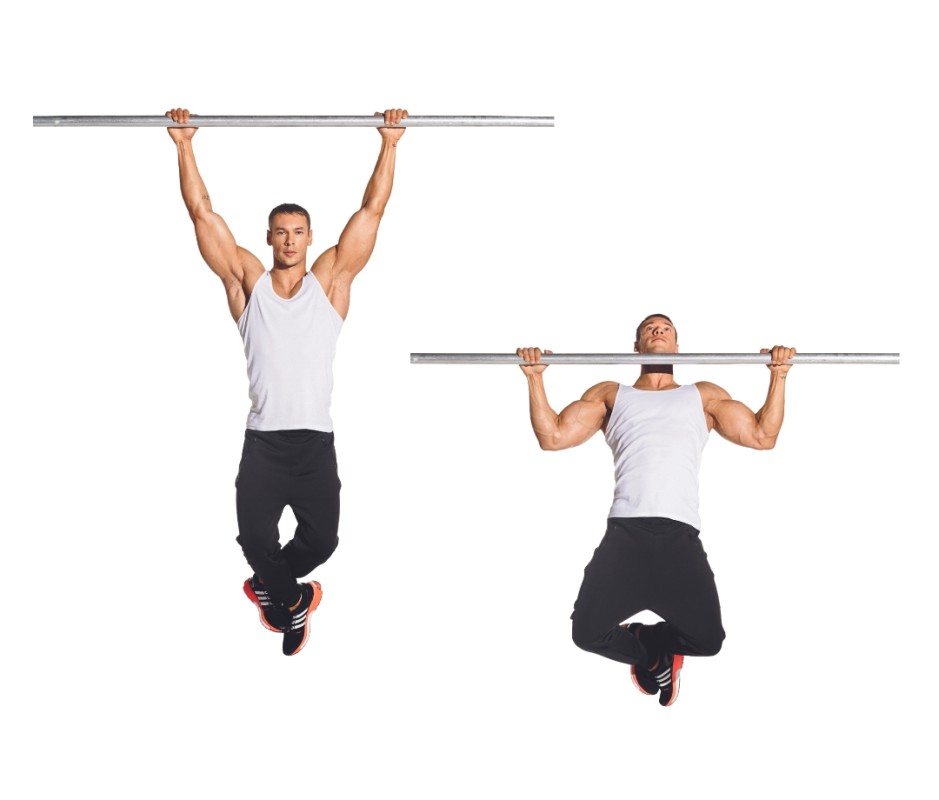
James Michelfelder
How to Do It
- Secure a resistance band around a pullup bar that can help assist in hoisting your head above the bar. The thicker the band, the greater the resistance.
- Loop the bottom end around one foot, then cross your ankles.
- Start with your hands on a pullup bar with an overhand grip for pullups (shown) or an underhand grip for chinups—the latter of which is easier for beginners.
- From a dead hang position, pull your body up to the bar until your chin clears the top, ensuring you don't use momentum to swing your body.
- Lower yourself under control back to the starting position.
- That's 1 rep.
- Complete 3 to 4 sets of 6 to 12 reps, resting 45 to 75 seconds between sets.
2. Trap-Bar Deadlifts
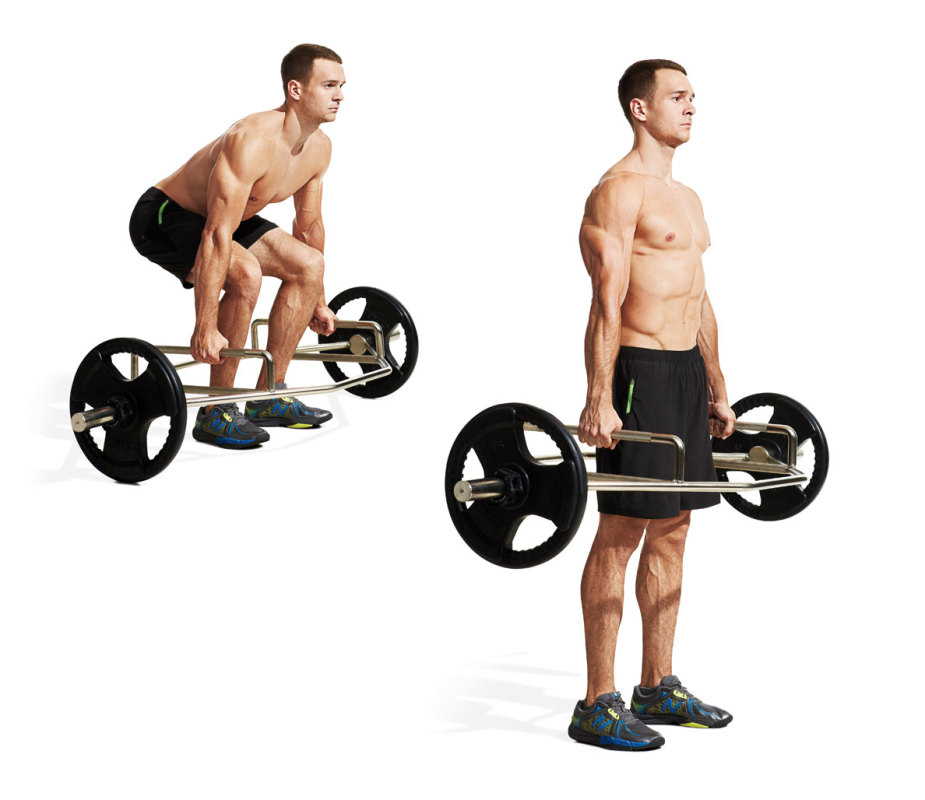
Beth Bischoff
How to Do It
- To start, find a trap bar or hex bar in the gym.
- Stand in the hexagonal opening, then bend your knees to grasp the handles on either side. If just starting out, use the hex bar unloaded, then add weight accordingly.
- While pressing your heels into the floor, maintain a tall chest, brace your abdominals, and stand up with the bar.
- Lower under control, maintaining your form throughout.
- That's 1 rep.
- Perform 3 to 4 sets with 6 to 10 reps, resting 60 to 75 seconds between sets.
Related: 15 Best Exercises for Love Handles to Burn Belly and Back Fat Faster
3. One-Arm Dumbbell Row
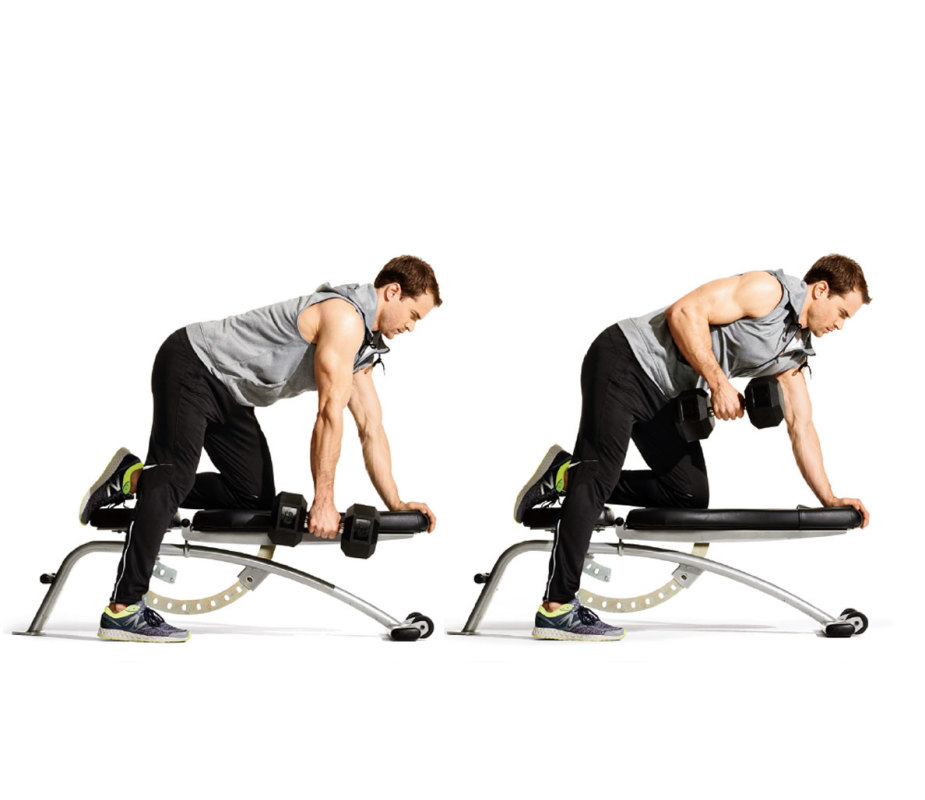
James Michelfelder
How to Do It
- Position a dumbbell to the right of a flat bench. Kneel your left leg on the end, step your right foot out wide, then rest your left hand on the top of the bench so you have three areas of support.
- Grab the dumbbell and make sure your upper body runs parallel to the floor.
- Pull the dumbbell straight up toward the side of your chest, then lower it slowly and with control toward the ground.
- That's 1 rep.
- Complete 3 to 4 sets of 6 to 12 reps on each side, resting 45 to 75 seconds between sets.
4. TRX/Suspension Trainer Row
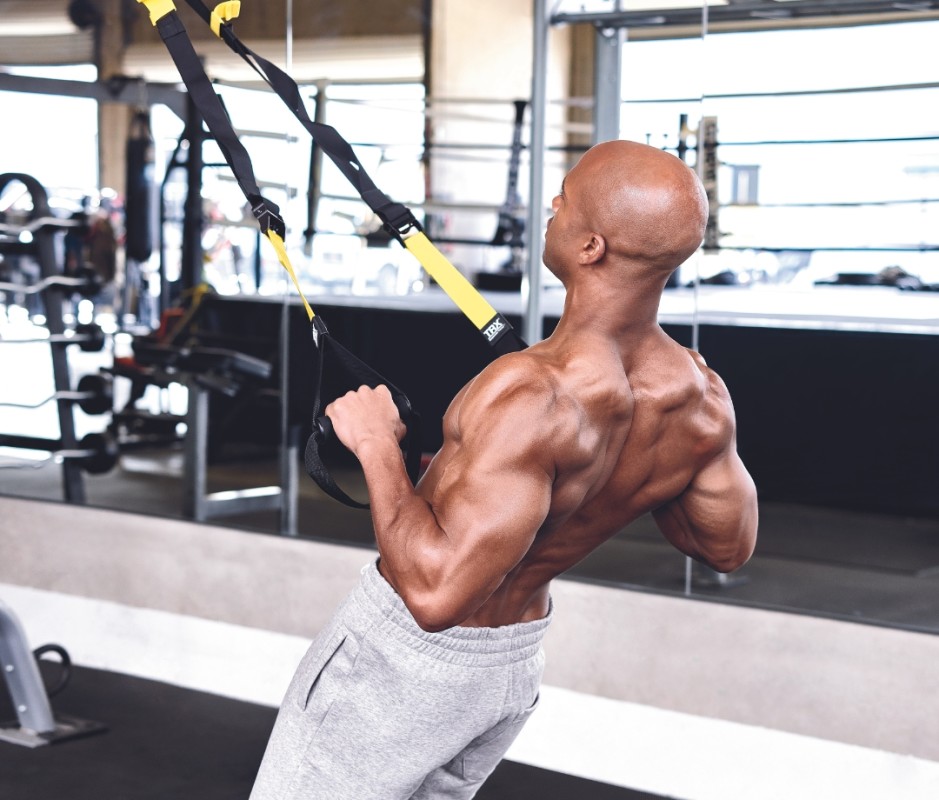
Per Bernal
How to Do It
- To start, shorten the straps of a suspension trainer (like TRX) as short as they can go.
- Stand facing the anchor point.
- Grab the handles with a neutral grip, and start to walk your feet out.
- Keep your arms straight, palms facing the floor, and your torso tight.
- Row or pull your body toward the anchor point, maintaining tight tension in the straps, squeezing all the muscles of your back toward your spine.
- That's 1 rep.
- Perform 2 to 3 sets of 10 to 20 reps, resting 30 to 60 seconds in between each set.
5. Cable Rear Delt Flyes

Justin Steele
How to Do It
- To start, face a cable machine and adjust the pulley to slightly higher than shoulder height.
- Grab the left pulley with your right hand, and the right pulley with your left hand, then pull a bit so both arms are on their respective sides.
- With strong, locked arms, pull the cables out and back until you finish the movement with the cables completely to the sides of your body.
- Pause, then return to the starting position, making a point to engage as many muscles in your back as possible.
- That's 1 rep.
- Complete 2 to 3 sets of 10 to 15 reps, resting 45 to 75 seconds between sets.
6. Straight-Arm Cable Pulldowns
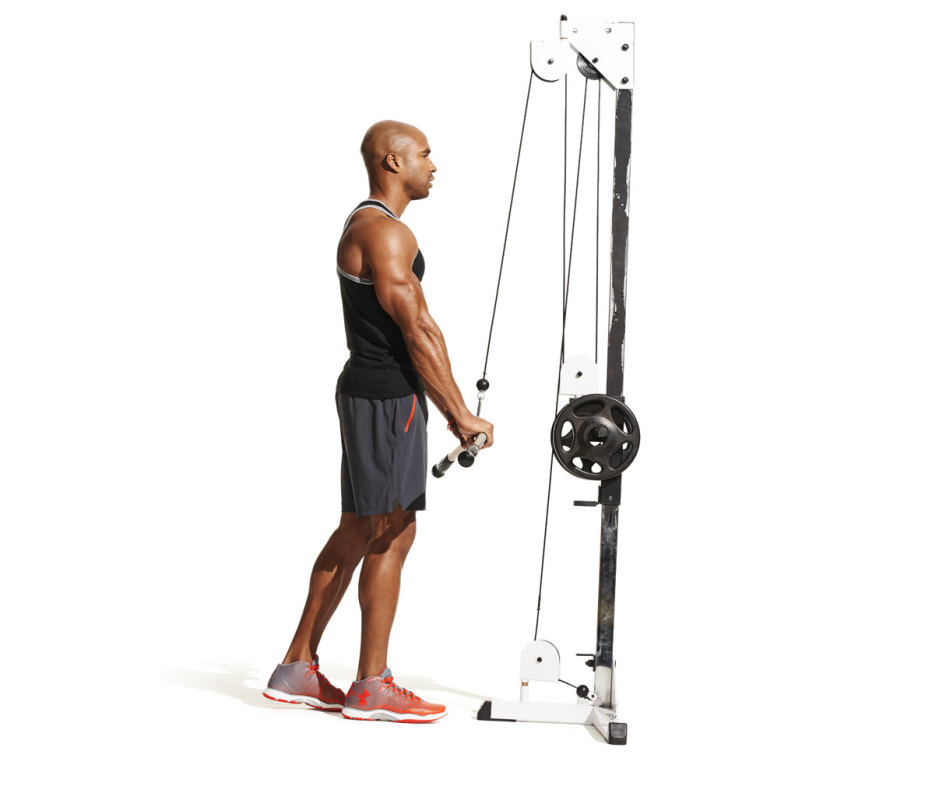
James Michelfelder
How to Do It
- To start, set up a cable machine to the top setting with a straight bar.
- Grab the bar with an overhand grip, and take two steps away from the machine.
- Bend your torso slightly forward and lock out your arms.
- Pull the bar straight down until it touches your thighs, then slowly bring it back to the starting position.
- That's 1 rep.
- Perform 2 to 3 sets of 10 to 12 reps, resting 45 to 75 seconds in between sets.
Pro Tip
Engage your abs to stabilize yourself but resist the urge to turn this exercise into a crunch.
7. Back Extension
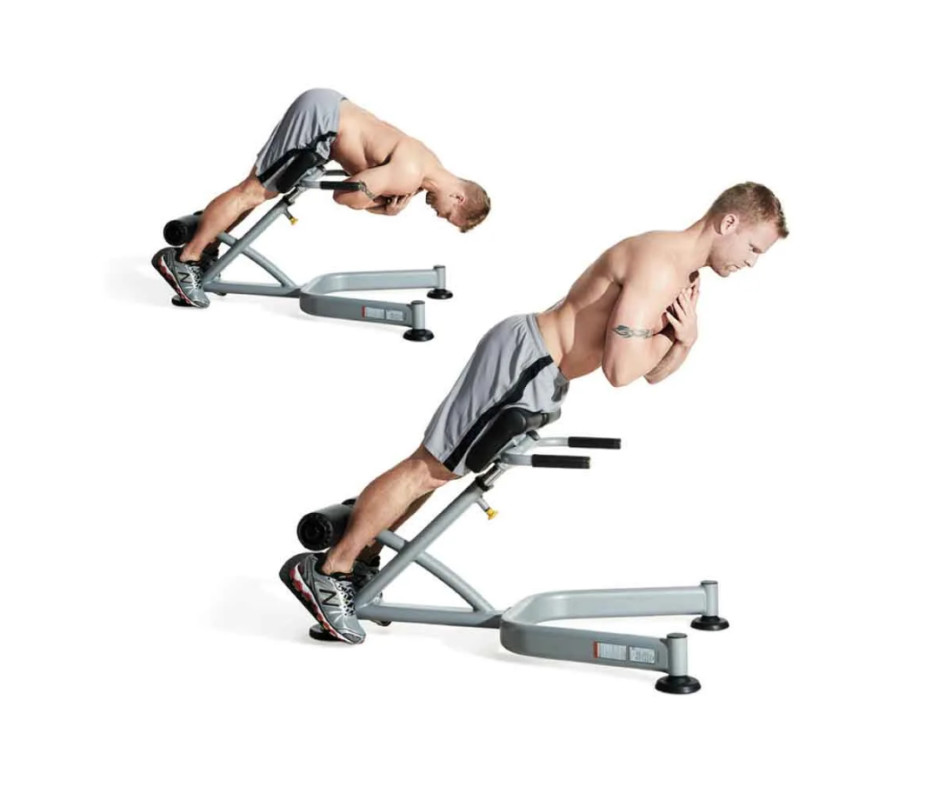
Beth Bischoff
How to Do It
- Set up the bench so your thighs are flat against the pads, but not so high that it hinders you from bending freely at the hips, to start.
- Flare your feet out a bit, tuck your chin throughout the entire movement, and round your shoulders forward as you bend over as far down as you can go.
- Contract your glutes as you come up until your spine is in a nice neutral position.
- That's 1 rep.
- Complete 3 to 4 sets of 10 to 20 reps, resting 45 to 75 seconds between sets.
8. Wide-Grip Lat Pulldowns
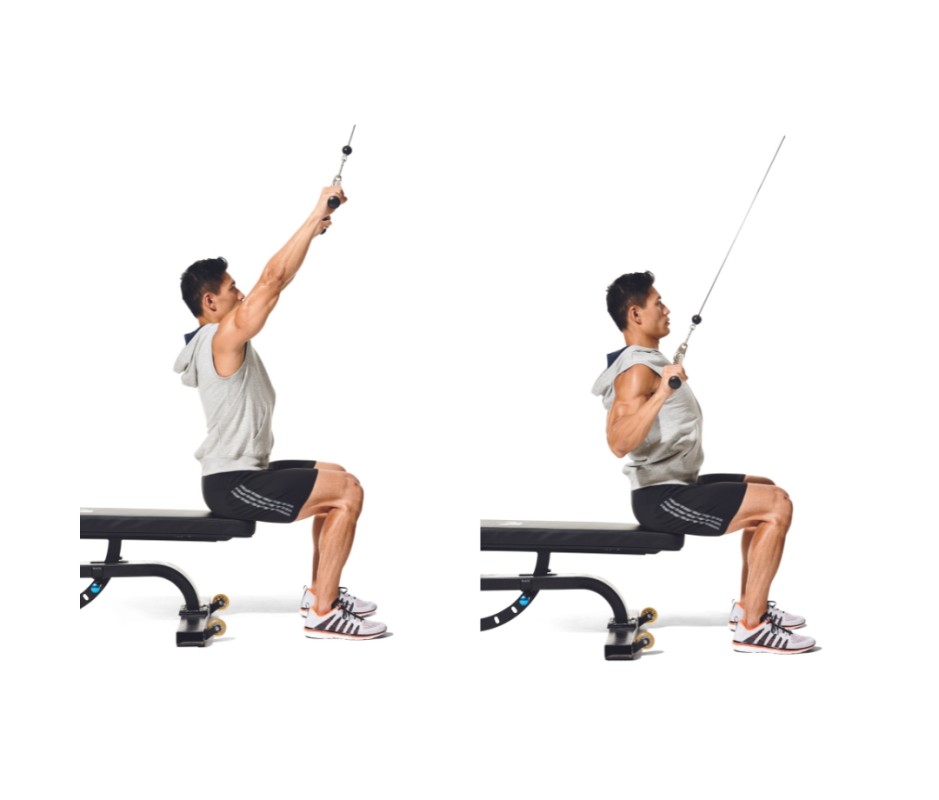
James Michelfelder
How to Do It
- Sit down on a cable pulldown machine and attach the wide-grip bar, to start.
- Using an overhand grip, place your hands slightly wider than shoulder-width.
- Lean your torso back at a slight angle and maintain a tall chest as you pull the bar to the top of your pecs.
- Focus on squeezing your back muscles together as you approach the bottom of the movement.
- That's 1 rep.
- Perform 3 to 4 sets of 8 to 12 reps, resting 45 to 75 seconds in between each set.
Pro Tip
Resist the urge to lean backward and use your glutes to complete this movement. If that's the only way you can lower the bar, then switch to a lighter weight.
Related: 30 Best Back Exercises for 2024
9. Barbell Bentover Row
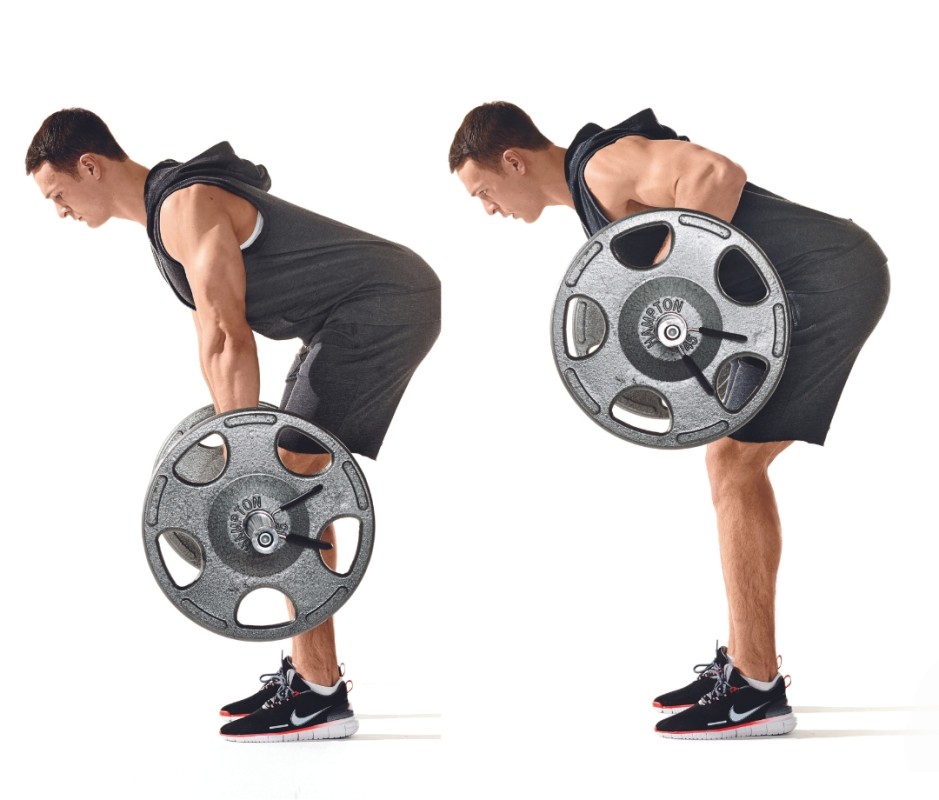
James Michelfelder & Therese Sommerseth
How to Do It
- To start, grasp a barbell with an overhand grip.
- Hinge your hips and bend your torso over until it's almost parallel to the ground.
- Without moving your upper body, pull the bar toward your abdomen as your elbows track beside your chest.
- Squeeze your back muscles at the top of the movement, then lower under control.
- That's 1 rep.
- Perform 3 to 4 sets of 6 to 10 reps, resting 45 to 75 seconds between sets.
10. Barbell Inverted Row
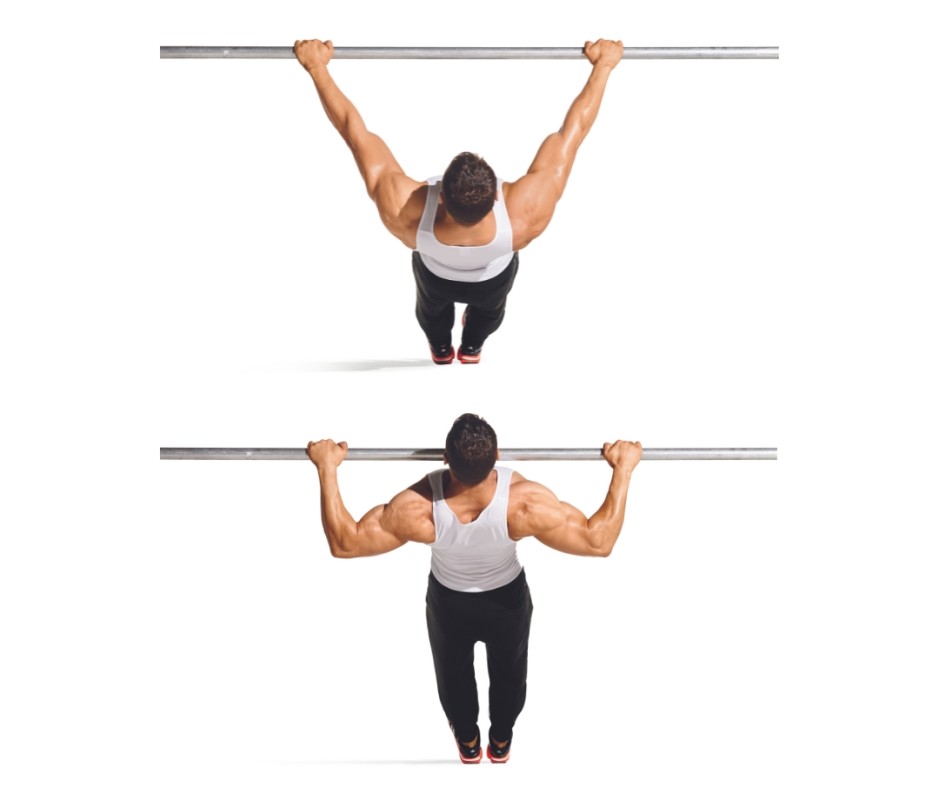
James Michelfelder
How to Do It
- To start, stand in front of a Smith machine or a barbell set in a squat rack with the bar at about waist height.
- Grasp the bar with a slightly wider than shoulder-width grip.
- Come under the bar and set your body completely straight from head to toe.
- Flex your feet so only your heels are making contact with the ground.
- Maintaining this straight posture, pull your body up to the bar, then lower back down.
- That's 1 rep.
- Complete 3 to 4 sets of 10 to 15 reps, resting 45 to 75 seconds between each set.
How Can Beginners Build Their Backs?
Beginners can build their backs by first nailing proper form for each exercise. Read the directions for each step of an exercise carefully and practice in a mirror if necessary. Try using resistance bands or light weights when practicing and focus on feeling the targeted muscles to increase mind-muscle connection.
Start with one or two sets before adding more as you get stronger. Your first week or two will likely cause substantial muscle soreness, which will lessen as you stay consistent. Remember to add more volume over time by adding weight and reps and/or sets week over week. Just go slowly to avoid junk volume. The biggest factor in whether you'll see results is whether you stay consistent. Without consistency, you'll get nowhere.
If you continue to struggle with a movement or are unsure of your form, it's a good idea to seek out a personal trainer for advice. Doing this can prevent injuries and bad form habits from developing from the start.



